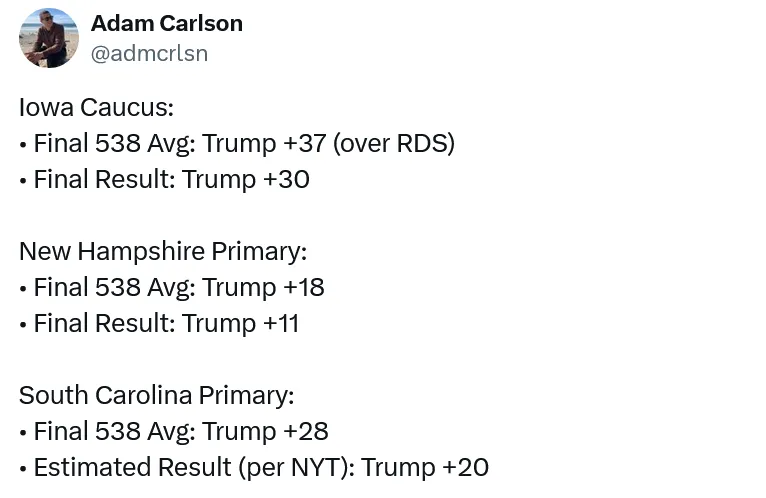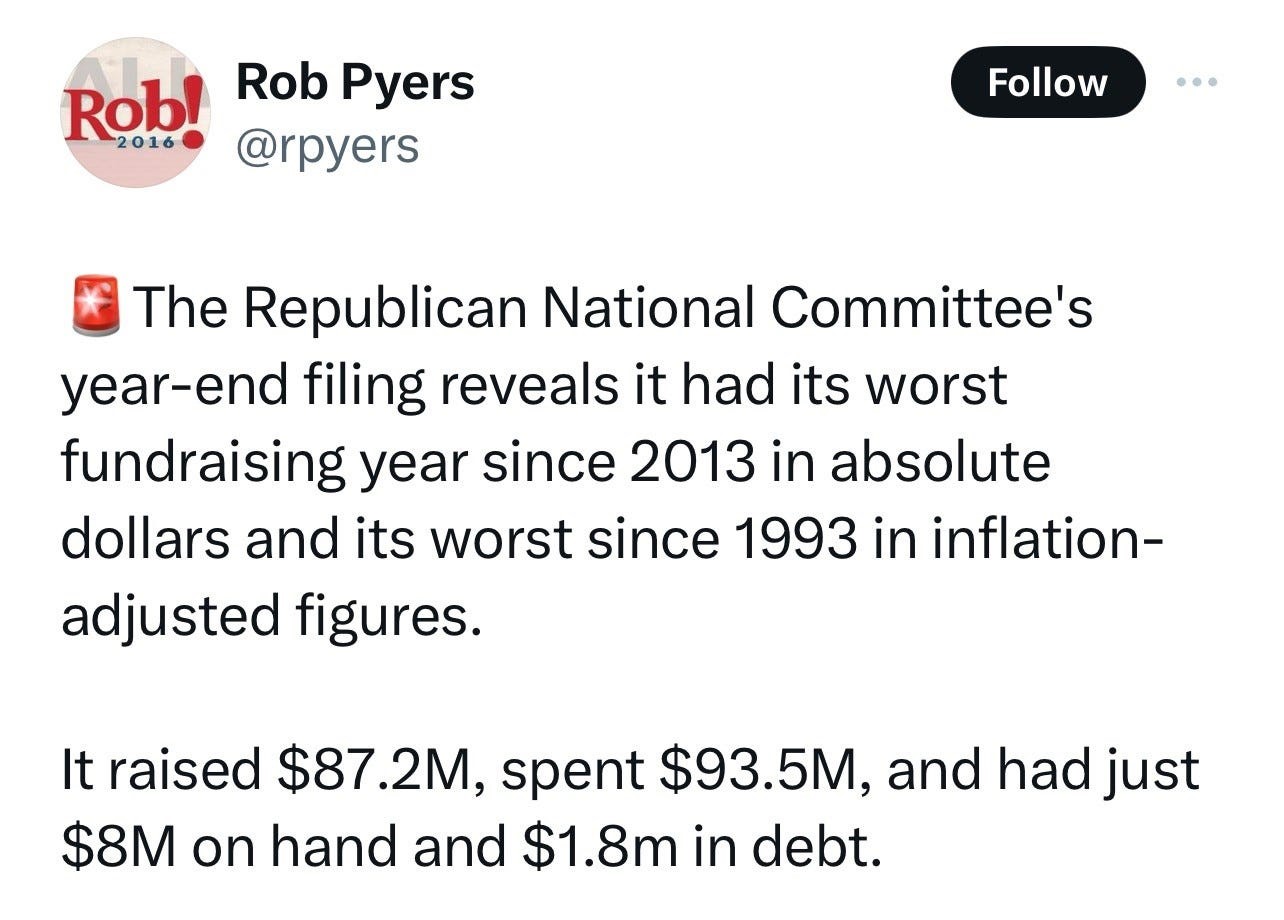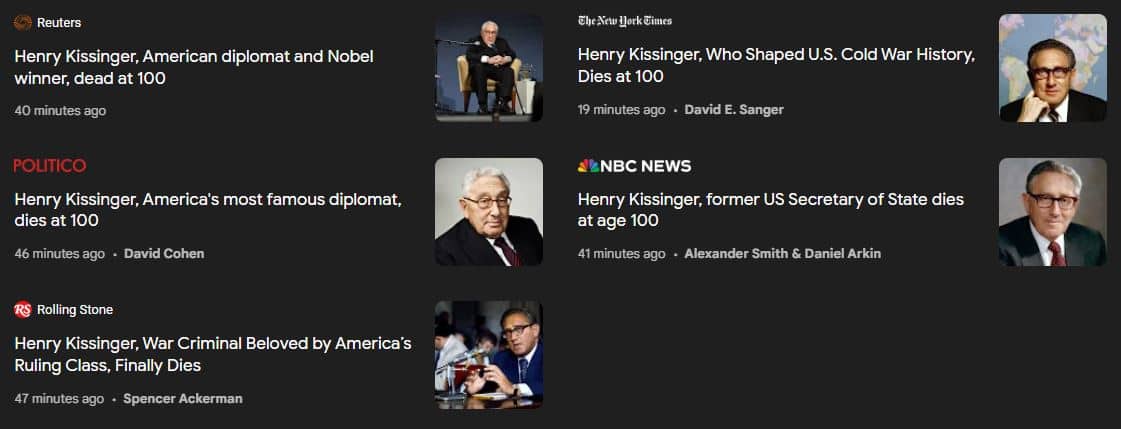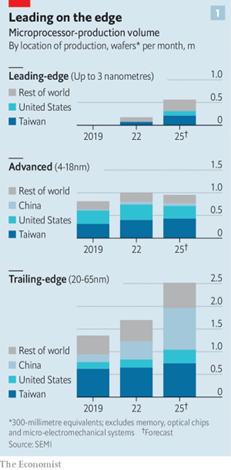The Daily Escape:

Saucer magnolia trees, Smithsonian, Washington DC – March 2024 photo via Smithsonian Gardens
Trump has five days to come up with more than a half billion dollars in liquid assets or New York State could begin to freeze some of his bank accounts and seize some of his marquee properties. From the NYT:
“It’s crunchtime for Donald J. Trump….the former president must secure an appeal bond for roughly half a billion dollars in his civil fraud case in New York, a possibility that was called into question on Monday.
In a court filing, Mr. Trump’s lawyers revealed that he had been unable to secure an appeal bond despite “diligent efforts” that included approaching about 30 bond companies.”
This would amount to about 20% of Trump’s total net worth, but as Timothy Noah notes, much of the rest is already spoken for. There’s the $91 million bond he just secured from Chubb for his E Jean Carroll defamation appeal. And a lot more:
“There’s $392,000 that Trump paid The New York Times…for filing a frivolous lawsuit. There’s $938,000 that a judge last year ordered Trump and his attorney to pay Hillary Clinton for filing a frivolous lawsuit. There’s $382,000 that a London judge earlier this month ordered Trump to pay Orbis Business Intelligence, founded by Christopher Steele (of the ‘Steele dossier’), for filing a frivolous lawsuit. There’s the aforementioned $5 million that Trump paid earlier in the Carroll case. There’s $110,000 in contempt fees that Trump accrued for bad-mouthing New York Attorney General Letitia James during the civil fraud prosecution.”
On top of all that, Deutsche Bank’s loans to Trump require him to maintain $50 million in “unencumbered liquidity” and a minimum net worth of $2.5 billion. He’s likely already in default of those provisions. From Rick Wilson:
“For decades, Donald Trump’s public image as the dealmaker, builder, salesman, and showman was his brand, his most significant asset, and the key to his multifarious con games. He discovered the secret sauce of modern financial alchemy was making it up, relying on the greed and desire of investors and banks to get some of the….Trump glamour. The swagger, the gold leaf, the…biggest, best, tallest, sexiest adjective…of every Trump project attracted bankers and vendors, no matter how rickety…the property or project may have been.”
His serial bankruptcies weren’t some fiendishly clever business practice; he was simply bad at making money on a legitimate basis. For all that, Trump is peerless at convincing people that he is a business genius with no need for their capital…[just] as he asks them for money.”
Did that take a lot of creative accounting? Of course. More from Wilson:
“Was there a yawning delta between what Trump claimed his properties were worth and market reality? Always. Did he tell the banks one thing about valuations when refinancing…and then turn around to tell local and state tax authorities that the same property…was practically…worthless…for their purposes? Naturally.”
Trump’s most successful business has been his email money-raising business that was targeted at lower-and-middle class angry white voters. He asks them to send part of their payroll, social security, and disability checks to him. Now, that big con is falling apart, with the donor list getting exhausted. The Trump base has realized that he’s not financing his campaign, he’s spending the vast majority of their donations on his legal expenses and now, on his fines.
His financial house of cards is falling apart. His always highly-leveraged properties peaked in value pre-Covid, and none could be sold quickly enough or for enough cash to give him the lifeline he needs to pay his mounting judgements and court fees.
He managed to get the Chubb Group to underwrite his bond in the E. Jean Carroll defamation case(s), but 30 lenders turned him down in the business fraud case, and this week, the “billionaire” had to tell the courts he can’t come up with the roughly $500 million he needs to stave off liquidation of some of his assets by NY AG Letitia James.
The truth is that there’s no reason why large financial/bond companies won’t take real estate as collateral for a bond or loan to Trump. The problem is that they WON’T take real estate collateral without a true, accurate, and independent appraisal for the value of the real estate collateral.
But that’s precisely what the NY fraud case found Trump was guilty of doing. Trump can’t offer up those properties to the bonding companies, because it would prove again the state’s case that he fraudulently overstated the values of his NY properties on loan applications and financial statements. It wouldn’t be difficult to sell one or more of the properties in a true arm’s length sale, but Trump would have to face the reality that he inflated their value.
NY AG James and all Democrats should remember that Trump’s properties are physical manifestations of his ego. Trump Tower was the model of that ego for decades. That’s why when Rick Wilson tweeted “Take Trump Tower first” the MAGATs reaction was rage. Apparently this is how the authoritarian addiction plays on their minds; they see his long pattern of fraud as smart business and see Trump’s facing the reality of losing in court as an attack on themselves.
No matter, Trump always portrays himself as a martyr, claiming the deep state is out to get him. But none of it will change that the facts are damning, that the pattern of fraud is explicit and vast, and that Trump is veering towards being cash-strapped. Just when he needs hundreds of millions to run his 2024 presidential campaign.
Depending on how the judgments pan out, Trump might become the first ex-president since Ulysses S. Grant to declare bankruptcy. But bankruptcy isn’t going to save him from having to pay his pre-existing judgements.
The irony here is that even while Trump is being taken down to the studs, he’s still at least even money to win the election in November. What does that say about the American voter in 2024?
Finally, with Trump in financial extremis, anyone who swoops in now to save him by posting half billion dollars is going to do it expecting to be compensated in some way beyond simply the repayment of the loan, if/when he loses his appeal of the fraud conviction.
What would Trump be willing to promise to keep his considerable fat out of the fire? Would Russia do it? What would Putin want? What would Saudi Arabia want? Who else might see an angle in this?
After all, despite how large we think $500 million is, it would be a cheap price to pay for many around the world who would wish trouble on the US.














 Wildflower bloom, Peridot Mesa on the San Carlos Reservation, AZ – March, 2023 photo by
Wildflower bloom, Peridot Mesa on the San Carlos Reservation, AZ – March, 2023 photo by 